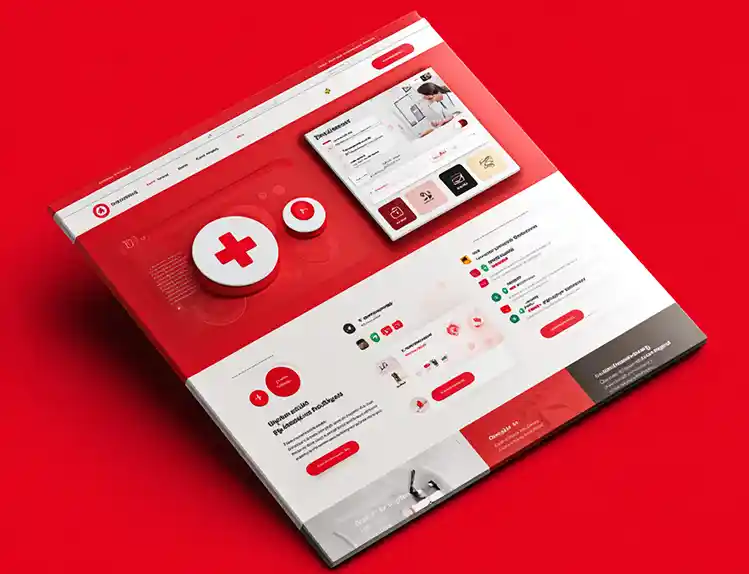7 Web Content Management Predictions for 2016

Russ Danner

2016 is off to a roaring start and digital experience projects are at the top of the to-do list for most organizations. The following are 7 predictions in Web Content Management for this year and how these changes will affect you.
#1 Major enterprises will move WCM to the cloud
IT has been moving infrastructure to the cloud for years however for most of that time WCM solutions remained on premise. WCM has traditionally been left behind the cloud movement for three reasons: The first is, that while there are many WCM solutions, few were really designed for the cloud. The second reason is a lack of support for integration. Integration with enterprise systems like CRM, customer data, inventory, ERP and others can be difficult to integrate on the cloud and outside the firewall due to infrastructure and security concerns. The third reason is lack of real development support.
Throughout 2015, we’ve seen a major shift in CMS offerings, both Managed Services and pure Software as a Service that now handle or claim to handle these concerns in a way that allow complex WCM environments to move to the cloud. If you’re looking to replace or improve your digital experience platform in 2016 or beyond, you need to consider deploying in the Cloud.
#2 Content as a Service will become part of the platform
Over the last couple years we’ve seen a new “flavor” of CMS pop up called “headless CMS” that were specifically created for delivering Content as a Service (CaaS.) Content as a Service is all about delivering content completely void of presentation via an API in a pure data-based format that can be requested and presented by the consumer in a way that makes sense for that consumer. While headless repository CMS solutions covered a real need and a gap in support for single page applications and native mobile apps, they also created a new silo for content in the enterprise. Silo’d content greatly limits re-use and always increases the amount of process and overhead required to create and manage it. This year we will see most major CMS vendors include content as a service as a core part of their platform. In 2016 you need to question any product that cannot address this concern. New channels and delivery mechanisms spring up all the time so your WCM needs to be able to adapt quickly.
#3 Developers will demand WCM that is easy for them
In general, CMS’s are typically good for authors but not that great for developers. Most CMS platforms prioritize the author over the developer. From extending the CMS to building functionality in your digital experience projects, most CMS platforms have only limited extension points, lack support for native developer tools and require a traditional code deployment process that takes an excessive amount of time. This is often even more true in the cloud. Yet great digital experience and the CMSs that support them sit at the very intersection of creativity and innovation making ease of development one of the most important attributes of any WCM. As the demand for faster innovation continues to mount we expect developers to put their foot down and demand better development support from their WCM.
#4 A return of the hybrid native mobile application
In 2012 Facebook declared the hybrid mobile application dead. Native apps were faster and offered superior functionality to HTML5 based hybrid mobile apps. 3 years is a lot of time in technology. The networks, content delivery platforms and the devices that we use to deliver mobile content have improved drastically. Networks are faster, browsers are faster and more importantly browser based development is MUCH cheaper and faster. Native applications will maintain certain advantages but as the technology landscape continues to evolve, old assumptions must be questioned. In 2016 Companies seeking to gain the best of both worlds along with those who have avoided native development due to costs will reconsider previous notions that only a native experience will do.
#5 Employee experience will gain similar traction as customer experience
2015 was the year of customer experience. We all have a personal connection to the importance of a great customer experience so it’s easy to understand why customers reward it with loyalty and are in recent years, beginning to demand it! In 2016 we will see the same shift take hold around employee experience. The reasons are simple. First, our employees are also customers in their daily life. They want the same experience at work that they have outside of work. Second, happy, efficient employees create happy customers.
#6 False standards will lose ground
With the introduction of faster, more flexible, more scalable content persistence, businesses will question the validity of and replace slower stores based on standards like SQL and JCR (Java Content Repository.) Standards like SQL and JCR gain traction because as standards they offer the potential speed development by creating a widely known interface. Standards also incentivise innovation from vendors because they offers the potential for their solutions to be plugged in and at the same time a protection from vendor lock-in for the consumer due to that very same pluggable nature. Standards are great. No issue with standards in general! The issue with SQL and even more so with JCR is that in the WCM space the abstractions offered by these standards are at the wrong level that offer very little in the way of support for the performance, scalability, personalization and on-the-fly big data analytics demands of today’s digital experience. There is a growing trend towards the use of much more scalable, much more powerful document oriented stores like MongoDB, Solr, Elastic Search (and others) for WCM solutions. I expect this trend only to accelerate in 2016.
#7 Customer Data infrastructure will become a leading concern
Content is king of this there can be no doubt. However personalized content and experiences require personalized data (a lot of it) as well as on-the-fly analysis of that data. The need to drive a consistent customer experience throughout the entire customer journey will bring customer data management as well as all of its challenges including scale, security and user privacy to the very fore-front of the conversation for major enterprises. Master “customer” data management and integration of that data with your WCM technology is clearly going to be one of the most important areas of innovation for 2016.
What emerging trends do you think we can anticipate this year? Feel free to share your thoughts in the comments section below.
Related Posts

What Kind of CMS Is CrafterCMS? Headless—Plus Everything You Need to Ship Faster

Amanda Jones

Migrating from Liferay to CrafterCMS

Amanda Lee

The Next Wave of OTT Video: AI-Powered Personalization and Content Discovery

Sara Williams

GEO for Retail Websites: What Content Creators Must Know in the Age of AI Assistants

Amanda Jones
Related Resources
-

CrafterCMS at eBay: The Universal Content Platform for eBay.com
Webcast
-

Personalized Digital Experiences for a Cruise Liner
Webcast
-

Introducing CrafterCMS v4.0
Webcast
-

Modernizing Video Delivery and Content Management at CPAC, A Canadian Nationwide Broadcaster
Webcast
-

Building React Apps on a Headless CMS
White Paper





